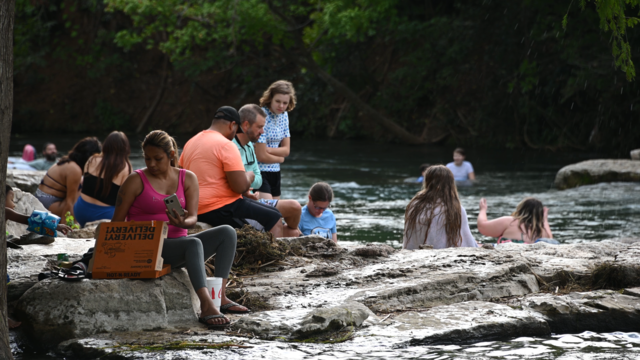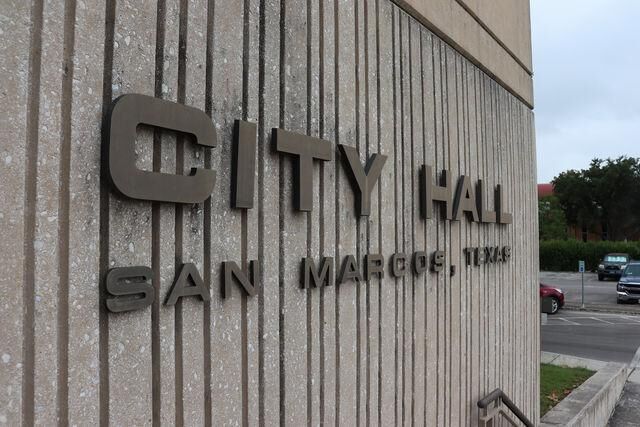All San Marcos city parks officially reopened to the public in March, following months of closures due to the COVID-19 pandemic. However, as park visitors and activities return, litter also finds its way back into the San Marcos River.
Because of pollution, San Marcos has worked to implement various elements to halt the spread of litter, such as the Conservation Crew, a local river cleaning group, and the Edwards Aquifer Habitat Conservation Plan (EAHCP).
The EAHCP works to protect endangered species in the San Marcos and Comal Springs area, ensuring they have a suitable habitat. The plan uses habitat and flow protection measures and has also hired contractors who consistently clean the river.
San Marcos Discovery Center Coordinator Eric Weeks, who manages the Conservation Crew, says since the return of park access, the amount of litter collected by the cleaning group has increased.
“Comparing May this year versus last year, it’s doubled from what the Conservation Crew removed. In May, the Conservation Crew removed 206 cubic feet of litter. In May of this year, they removed 426 cubic feet of litter. June of 2020 was 590. June of 2021 is 1,081, so it’s just about doubled,” Weeks says.
Residents in town have also taken note of the change in the local waterway. Haley Johnson, a Texas State geography graduate student, has focused her thesis on water resources and has experience in analyzing the river. Through observations, Johnson has grown concerned over the river’s litter increase and worries about the lasting impacts it will have on the environment.
“The river is a protected environment for endangered species, so affecting water quality is a huge concern because the environment is so fragile. Also, plastic takes a very long time to degrade, so it’s really in our environment forever. So, every piece of plastic that has ever been created is still in the environment. It’s just a constant threat to aquatic species,” Johnson says.
Haley Tacker, a graduate student in sustainability studies and a former member of the Conservation Crew and Meadow Center Habitat Field Crew, says during park closures last summer, the river looked clean and had very little plastic matter.
“I just didn’t anecdotally notice much pollution, but now, obviously, since its opening back up, it seemed like a provided increase,” Tacker says.
Mekaworks, an outdoor cleaning robot company, aims to help with the local litter increase. Melani Howard, habitat conservation plan manager for the City of San Marcos, says Mekaworks robots pick up litter lying around at parks and can cover up to four acres a day.
The robots are not yet able to detect microliter or litter that is less than one inch. Additionally, the gadgets have encountered interference from river park visitors. However, new additions will be added to the robots’ operation, such as a speaker so they can respond to interference.
The city also implemented the Leave No Trace program on May 29. Through the program, stations are set up around parks where Leave No Trace workers pick up trash around the river, engage the public in games that promote river protection and provide trash bags to park visitors. The program will end on Sept. 5.
“We have on the weekends, three people at each table, and they are there to educate the people who are visiting our river on the habitat and the special quality of our river,” says City of San Marcos Community Enhancement Initiatives Manager Amy Thomaides.
Both Thomaides and Howard strive to keep the river’s environment sustainable for endangered species. Howard believes this sustainability is important not only to the lives of these species but to the functioning of the river itself.
“I like to remind people that if we did not have endangered species in the San Marcos River, then there would have not been a cap on the amount of pumping of the Edwards Aquifer. That is the primary source of water for the San Marcos River. We would have lost our river. But, because of the native species we have, we continue to have a San Marcos River,” Howard says.
Citizens can help contribute to keeping the river clean through volunteer initiatives. Those interested can email Thomaides at [email protected].
San Marcos tackles litter increase after parks reopen
July 26, 2021
Donate to The University Star
Your donation will support the student journalists of Texas State University. Your contribution will allow us to purchase equipment and cover our annual website hosting costs.























